Wallpaper Settings
Revision for “Wallpaper Settings” created on November 28, 2021 @ 16:10:47
| Title | Wallpaper Settings |
|---|---|
| Content | <h1>Wallpaper Settings</h1>
<em>***Pardon our dust, this Wiki is under construction***</em>
<em>Click</em> the <strong>Wallpaper</strong> icon to <em>open</em> the <strong>Wallpaper settings</strong> dialogue. From here, you can <em>change</em> your <strong>wallpaper </strong>(<em>also called '<strong>background</strong>'</em>) to other community-made <strong>Bodhi Linux wallpapers</strong> which can be <em>downloaded</em> from the <strong>Bodhi Linux</strong> <strong>repositories</strong>. Additionally, you may <em>choose</em> a <strong>wallpaper</strong> of your own from anywhere you like.
<h2>Bodhi Linux Community Wallpapers:</h2>
If you want to use <strong>Bodhi Linux's</strong> custom <strong>wallpapers</strong>, you first need to <em>download</em> and <em>install</em> them. This can be done through <a href="https://www.bodhilinux.com/w/synaptic-package-manager/">Synaptic Package Manager</a> or through the <a href="https://www.bodhilinux.com/w/terminology/">terminal</a> with <code>apt</code>. Our <strong>wallpaper packages</strong> are all named <code>bodhi-background-*</code> with the <code>*</code> being <em>replaced</em> by the <strong>specific name</strong> of the <strong>wallpaper</strong> (<em>t</em><em>here are approximately 79 wallpapers...this should get you started!</em>). You can <em>install</em> these individually or all at once by <em>running</em> the following command in your favorite <a href="https://www.bodhilinux.com/w/terminology/">terminal</a>:
<pre>sudo apt install bodhi-background-*</pre>
<em>Note: These system-installed wallpapers are stored in your system at<code>/usr/share/enlightenment/data/backgrounds/</code> in case you need to find them later</em>
Once installed, <em>un-check</em> the <strong>Use Theme Wallpaper</strong> checkbox at the top of the dialogue; this is needed to allow using <strong>wallpapers</strong> outside of those <em>provided</em> in your current <strong>Moksha theme</strong>.
You can find all installed wallpapers by <em>clicking</em> the<strong> System</strong> radio button in the upper left corner of the window, which will show all available <strong>Bodhi Linux wallpapers</strong> installed on your system in a list on the left side of the window. <em>Click</em> through or <em>scroll</em> with arrow keys until you find something you like and then <em>click</em> <strong>Apply</strong>. This will <em>apply</em> your chosen <strong>wallpaper</strong> to <strong>every virtual desktop</strong> on your <strong>Bodhi Linux</strong> <strong>system</strong> at once.
If you want different wallpapers on <strong>one </strong>or <strong>all</strong> of your <strong>virtual desktops</strong>, you can do this by <em>navigating</em> to the <strong>virtual desktop</strong> you would like to set the wallpaper for (using the <strong>Virtual Desktop Switcher</strong>) and then repeating the above instructions with one extra step, as follows:
Once you have <em>selected</em> your new <strong>wallpaper</strong>, <em>click</em> on the <strong>Advanced </strong>button in the <strong>Wallpaper Settings</strong> dialogue and <em>select</em> the <strong>This Desktop</strong> radio button before <em>clicking</em> <strong>Apply</strong>. You should now see the <strong>wallpaper</strong> <em>change</em> only for the <strong>virtual desktop</strong> you are currently using while the others remain the unchanged. If you have <strong>multiple monitors</strong>, you may <em>configure</em> their <strong>wallpapers</strong> individually through this <strong>Advanced</strong> dialogue as well.
<h2>Wallpaper from Your Own Collection:</h2>
<em>Note: Personal<strong> wallpapers</strong> imported by the user are stored in<code>/home/user/.e/e/backgrounds/</code>where <code>user</code> should be replaced by your <code>username</code> on your system. However, because your imported wallpapers are different than what we're doing here, we suggest making a special folder like <code>/home/user/Pictures/backgrounds/</code> to store these wallpapers in. The reason for this should be apparent soon.</em>
Find a wallpaper from your favorite, trusted source, <em>open</em> the <strong>Wallpaper Settings</strong> dialogue and <em>navigate</em> to the <code>.../backgrounds/</code> folder you've made, wherever that may be, and <em>select</em> the <strong>image</strong> you would like to use. See the note at the beginning of this guide for tips on navigating through your filesystem with these dialogues.
<em>Tip: If you choose to download your own wallpapers, you should ensure they match your screen's resolution before using them or they may not work well</em>
Once you have found your desired <strong>wallpaper</strong>, use the same steps as listed above for <strong>Bodhi Linux-specific wallpapers</strong> to <em>apply</em> the <strong>changes</strong> to your <strong>desktop</strong>(<strong>s</strong>) as you see fit.
<h2>Importing wallpapers:</h2>
If you have a <strong>wallpaper</strong> which is not the correct size or resolution for your screen but want to use it anyway, there is one last handy way to <em>import</em> a <strong>wallpaper</strong>. This method will <em>modify</em> a <strong>picture</strong> of your choosing and <em>create</em> a new, <strong>altered version</strong> of it in your personal wallpapers folder, which you can then <em>use</em> as a <strong>wallpaper.</strong>
<em>Click</em> the <strong>Picture</strong> button in the <strong>Wallpaper Settings</strong> dialogue to open a new dialogue; <em>navigate</em> and <em>choose</em> a <strong>picture</strong> of your liking from anywhere on your system. Once you <em>select</em> the <strong>picture</strong>, you will be presented with another <strong>dialogue</strong> showing your <em>chosen</em> <strong>picture</strong> along with options for <strong>Stretch</strong>, <strong>Center</strong>, <strong>Tile</strong>, <strong>Within</strong>, <strong>Fill</strong>, and <strong>Pan</strong>.
These options decide how <strong>Moksha</strong> will <em>handle</em> the <strong>picture</strong> you have chosen. <strong>Fill</strong> is the default option, and is usually the correct choice. This will <em>shrink/enlarge</em> your <strong>picture</strong> to fit your screen's <strong>resolution</strong>, but without <em>stretching</em> or <em>distorting</em> the <strong>image</strong>. <em>Choosing</em> other <strong>options</strong> will yield different results, but you may prefer other options for some <strong>wallpapers</strong>. Be creative, artistic and experiment!
You may also <em>choose</em> the <strong>quality</strong> of the <strong>new picture</strong> which will be <em>created</em>. The <strong>quality </strong><em>cannot exceed</em> the <strong>original quality</strong> of the <strong>starting image</strong>. If you do not want to <em>reduce</em> the <strong>quality</strong> at all, you may simply <em>check</em> the <strong>Use original file</strong> checkbox to prevent the built-in image editor from <em>reducing</em> the <strong>quality</strong>. <em>Reducing</em> the <strong>quality</strong> of the <strong>images</strong> can help your <strong>virtual desktops</strong> <em>load</em> a bit faster when <em>switching</em> between them.
After <em>clicking</em> <strong>Ok,</strong> your new, <strong>modified image</strong> will be <em>created</em> in the <code>/home/user/.e/e/backgrounds/</code>folder where it can be <em>selected</em> from a <strong>list</strong> when you <em>click</em> the <strong>Personal</strong> radio button in the <strong>Wallpaper Settings</strong> dialogue. If you are not happy with the results, you may always <em>delete</em> this <strong>newly-created picture</strong> (<em>it is not the original</em>) and try <em>importing</em> the <strong>original picture</strong> again with different settings.
<h2>Solid Color Backgrounds:</h2>
And lastly, we have the <strong>Color</strong> button in the <strong>Wallpaper Settings</strong> dialogue. This option will allow you to <em>create</em> a <strong>simple background</strong> of any color you choose. Choosing this option will also <em>create</em> a <strong>new image</strong> of one solid color in your <code>/home/user/.e/e/backgrounds/</code> folder, which can be <em>applied</em> or <em>deleted</em> just as any other<strong> wallpaper</strong> can.
Return to <a href="https://www.bodhilinux.com/w/enlightenment-settings-a-dialog-box-roadmap/#1_Look_dialog_boxes_controlling_the_desktop_appearance">Moksha Settings - Look</a> or the wiki <a href="https://www.bodhilinux.com/w/bodhi-linux-how-to/">Table of Contents</a> |
| Excerpt |
